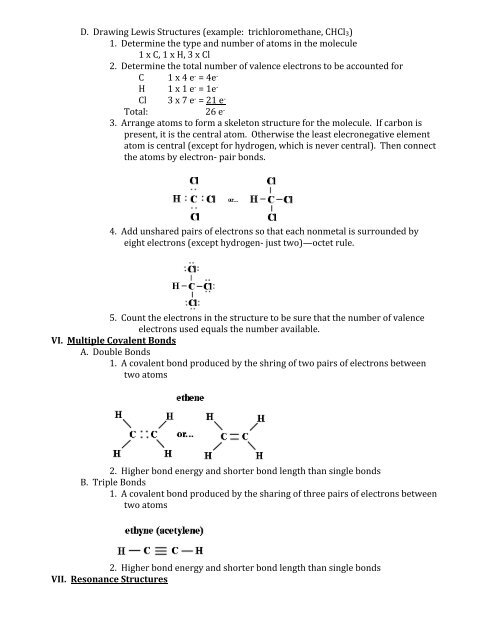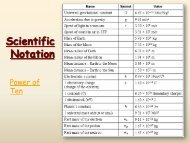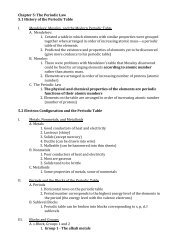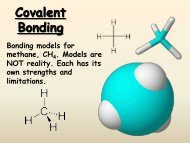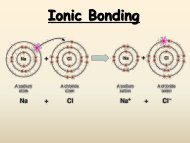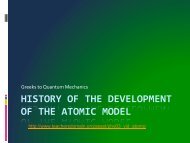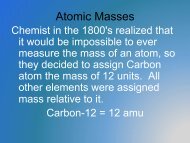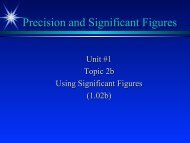Unit 4: Chemical Bonding and Molecular Structure Chapter 6 Notes ...
Unit 4: Chemical Bonding and Molecular Structure Chapter 6 Notes ...
Unit 4: Chemical Bonding and Molecular Structure Chapter 6 Notes ...
Create successful ePaper yourself
Turn your PDF publications into a flip-book with our unique Google optimized e-Paper software.
D. Drawing Lewis <strong>Structure</strong>s (example: trichloromethane, CHCl3) <br />
1. Determine the type <strong>and</strong> number of atoms in the molecule <br />
1 x C, 1 x H, 3 x Cl <br />
2. Determine the total number of valence electrons to be accounted for <br />
C 1 x 4 e -‐ = 4e -‐ <br />
H 1 x 1 e -‐ = 1e -‐ <br />
Cl 3 x 7 e -‐ = 21 e -‐ <br />
Total: <br />
26 e -‐ <br />
3. Arrange atoms to form a skeleton structure for the molecule. If carbon is <br />
present, it is the central atom. Otherwise the least elecronegative element <br />
atom is central (except for hydrogen, which is never central). Then connect <br />
the atoms by electron-‐ pair bonds. <br />
4. Add unshared pairs of electrons so that each nonmetal is surrounded by <br />
eight electrons (except hydrogen-‐ just two)—octet rule. <br />
5. Count the electrons in the structure to be sure that the number of valence <br />
electrons used equals the number available. <br />
VI. Multiple Covalent Bonds <br />
A. Double Bonds <br />
1. A covalent bond produced by the shring of two pairs of electrons between <br />
two atoms <br />
2. Higher bond energy <strong>and</strong> shorter bond length than single bonds <br />
B. Triple Bonds <br />
1. A covalent bond produced by the sharing of three pairs of electrons between <br />
two atoms <br />
2. Higher bond energy <strong>and</strong> shorter bond length than single bonds <br />
VII. Resonance <strong>Structure</strong>s


